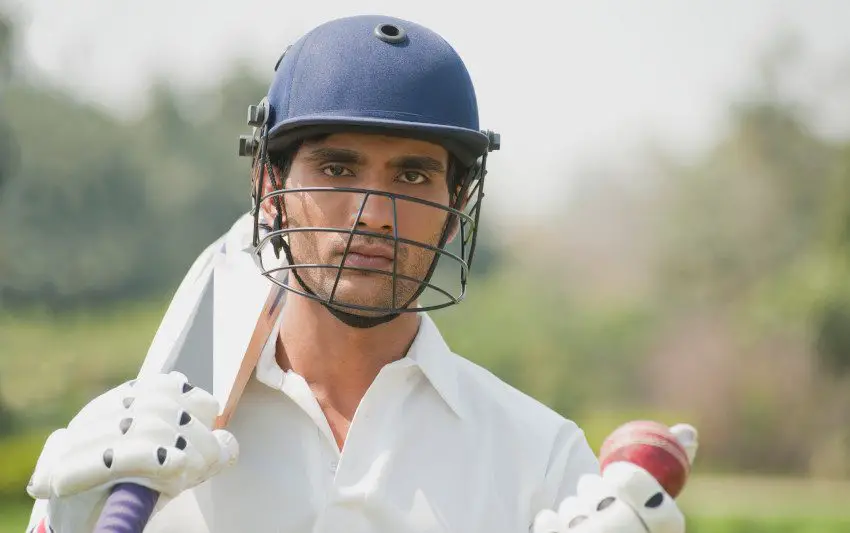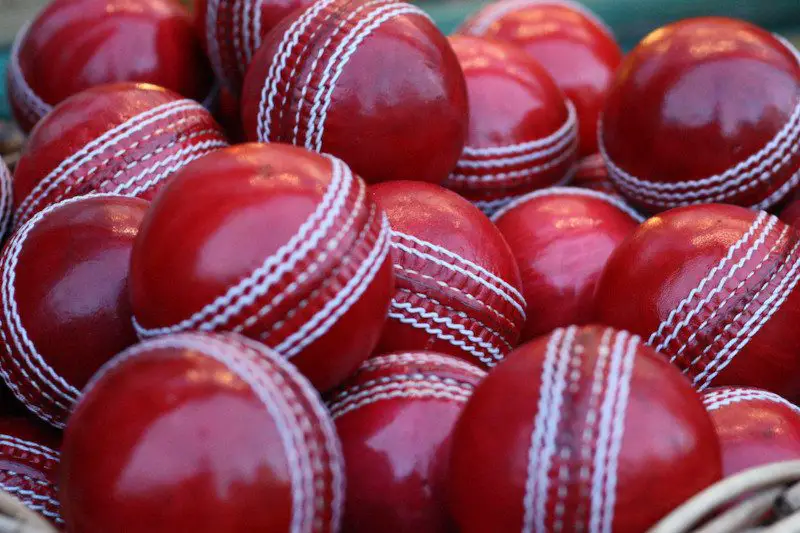Table of Contents
With the best will in the world, your cricket helmet is going to need a clean, just like other equipment. Whilst it may not look dirty, there is one obvious indicator that a clean is long overdue, the smell. As your helmet is worn for long periods of time, your sweat seeps into the inner lining and causes an unpleasant smell if left untreated. Cricket helmets are not cheap so cleaning and maintaining them is important.
Cleaning your cricket helmet is not a huge task if it is completed regularly.
Washing the outer shell and inner lining are quick and easy. Remember to let the helmet dry out before using it again. Ventilate your helmet to stop bad odours building up and use odour eliminating sprays, especially after a game. Finally, store your helmet away from direct sunlight but not inside your cricket bag.
Here we will break down the cleaning process so that your helmet remains in great condition for as long as possible.

1. Washing the Outside Shell
Depending on the material, there are different ways to wash the outer shell. For helmets with a smooth finish, a damp cloth is best for the job. A very mild detergent could be used for stubborn stains but must be used wisely. Excessive detergent could lead to the shell becoming discoloured. For helmets with a material finish, a soft brush is best for removing stains. Toothbrushes are ideal alongside a mild detergent. Keeping this part of the helmet clean not only improves the appearance of the helmet but also makes it easier to spot damage. Grubby marks or scuffs could be hiding cracks which weaken the shell and make the cricketer wearing it more at risk of injury.
2. Cleaning the Inner Lining
This is the part of the helmet that gives away how regularly your helmet is cleaned, or not. The inner lining is there to provide comfort whilst the helmet is being worn and also absorbs sweat from your head. Wearing your helmet for a long innings or a long training session will make you sweat. If this is left to simply soak in and dry, your helmet will stink the next time you wear it. A handy design feature of the inner linings is that they are detachable. Simply pop them out of the helmet and give them a wash in warm soapy water. Let them dry naturally and reattach them. International cricketers advise replacing the inner lining a couple of times a season to maximise comfort. Replacing them would negate the need to clean them, but could become costly, especially to the amateur cricketer.

3. Remove Any Bad Odours
Bad odours will occur in a cricket helmet and in other pieces of protective equipment because of sweat. There is no way of avoiding sweat during a game, unless your innings doesn’t last very long, but there are ways to avoid and remove bad odours. Cleaning the inside of the helmet will obviously help this but so does ventilation. Sticking your helmet back in your bag until next week is not the best storage option. Your helmet needs to be stored so that it can be ventilated. This doesn’t mean never put your helmet in your bag as bags are a great way to carry all of your equipment. After a game or training session leave your helmet out of your bag, ideally outside to allow bad smells to drift away. When in the changing rooms, make sure your helmet is out of your bag so that it is being exposed to fresh air. Ventilating and cleaning the inner linings will make sure bad odours are not a part of your game.
Use Odour-Eliminating Sprays
These are a good option to use as part of your cleaning routine. Simply spraying the helmet is not a long-term solution as the odour is simply being masked. Killing the bacteria which causes the odours is the best course of action, followed by a spray to complete the job. There are sprays which capture odours, but these need to be used sparingly. Remember, your helmet is worn on your head and odour eliminating sprays could run down your face if you are producing a lot of sweat. It is not just sweat that can cause odours. Loose hair and oily debris can develop a smell over a period of time unless they are removed. Keeping on top of this means the odour eliminating won’t take long at all.
4. Dry Before Next Use
Once the helmet is cleaned, it is important to let the helmet dry naturally. This is easier in the summer months as the helmet can be left outside. Using fans and hair dryers are not advised as they could cause the inner lining to become misshapen. A wet helmet is not pleasant to wear and is a distraction to batting or wicket keeping. To make sure the helmet is dried, start the cleaning process as soon as possible. Ideally, at the end of the day of the game or training session. More than likely, the day after would be a better option. Completing the cleaning early gives the maximum amount of time for the helmet to dry properly.
5. Proper Storage
International cricketers have the luxury of a helmet rack in the dressing rooms which means their helmets are stored correctly. Sadly, most amateur dressing rooms don’t have this level of facility so helmets and other equipment can end up on the floor or on a bench next to the cricketer who will be wearing it. Helmets shouldn’t be thrown around or the risk being damaged. Also, they need to be in a dry place, away from natural sunlight where possible. Storing your cricket helmet properly will ensure it lasts for as long as possible.
Conclusion
Cricket equipment can be expensive to buy, especially cricket helmets. They are there to prevent serious head injuries, but they are poorly maintained. Looking after your helmet and keeping it in good condition is a great skill for the future. It is a life saver and deserves to be looked after. Little and often is the best way to approach the cleaning regime rather than waiting for a huge build up.


